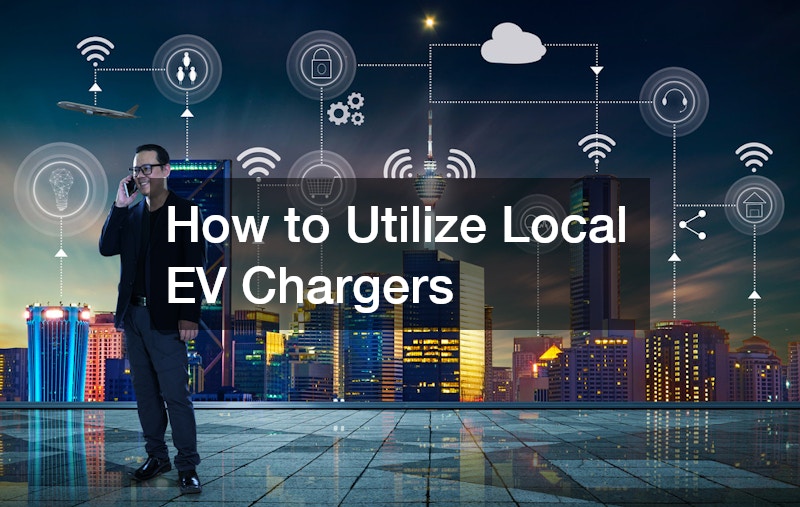
Understanding the utilization of local electric vehicle (EV) chargers is crucial for maximizing the benefits of EV ownership. This article delves into how one can effectively locate and use these charging stations. By exploring various methods of finding and accessing local EV chargers, EV owners can ensure a seamless charging experience and a more efficient journey.
With the increasing adoption of electric vehicles, locating convenient EV chargers has become vital. Smartphone applications like PlugShare and ChargePoint make it easier to map out nearby charging stations, offering real-time data on availability and compatibility.
Video Source
Using these tools ensures that you can plan your journeys with the assurance of having accessible charging points along your route.
Mapping services integrated into vehicle dashboards are another innovative way to locate chargers. Most EV navigation systems are designed to highlight the closest stations and offer the most efficient routes. By utilizing these technologies, drivers can save time and reduce the stress associated with searching for reliable charging spots.
Besides apps and navigation systems, community resources such as local EV clubs and online forums often share valuable tips on the most accessible and reliable charging locations. Engaging with these communities not only helps in finding chargers but also connects you with fellow EV enthusiasts. Ultimately, a combination of high-tech solutions and grassroots information can optimize your EV charging experience.
A clear understanding of the different types of chargers can significantly enhance your EV experience. Level 1 chargers, typically included with EV purchases, are ideal for overnight home charging, albeit at a slower rate. Level 2 chargers, often found in public spaces and residential areas, offer faster charging and are perfect for daily use.
For rapid charging when time is of the essence, DC fast chargers are the best option. These chargers can power up a vehicle in as little as 30 minutes, making them suitable for long-distance travel and urgent charging needs. Understanding the specific benefits of each type ensures that you can make informed decisions based on your charging needs and travel habits.
Having knowledge of charger types also aids in minimizing costs and maximizing efficiency. For example, while DC fast chargers are convenient, they can put extra stress on the battery if used excessively. Balancing the use of different chargers helps in maintaining battery health and ensuring a sustainable charging strategy over time.
Timing your charging sessions can make a significant difference in cost and convenience. Charging during off-peak hours, often late at night or early morning, can result in lower electricity rates, reducing overall expenses. This practice also supports a balanced grid demand, contributing to a more stable energy ecosystem.
Strategizing your charging schedule to align with your routine can further enhance convenience. For example, plugging in your EV before going to bed ensures you start the day with a full charge without the fear of urgent morning errands. Optimal charging schedules not only save time but also extend your battery's lifespan.
Electric utility providers often offer incentives and programs encouraging off-peak charging to alleviate grid stress. Keep an eye out for these programs, as they can translate into direct savings on your energy bills while promoting responsible energy use. Being informed about and utilizing such benefits can enhance your efficiency as an EV owner.
Preserving your EV's battery health is paramount to ensuring vehicle longevity and performance. Avoiding frequent fast charging sessions and instead relying on slower, more regular charges can help protect battery integrity over time. Ensuring that your vehicle doesn't frequently drop to low charge levels before recharging is another crucial practice.
Regular maintenance check-ups and software updates are instrumental in optimizing battery health. Manufacturers often release firmware updates that enhance charging speeds and efficiency, so keeping your EV's software up-to-date is essential. Consistent monitoring of battery diagnostics via onboard tools provides insights into its health and necessary actions.
Furthermore, utilizing built-in features designed to preserve battery life, such as pre-conditioning and avoiding extreme temperatures, drastically improves longevity. A proactive approach to battery management ensures your EV continues to perform optimally and sustainably. These practices are key to maximizing the return on your investment in an electric vehicle.
By understanding how to find and access local EV chargers and maximize your charging efficiency, you can enhance your experience as an EV owner. These insights ensure that you get the most out of your vehicle and contribute to a more sustainable future. Embracing the latest technologies, adopting efficient practices, and staying informed about industry developments are integral to successful EV ownership.
.